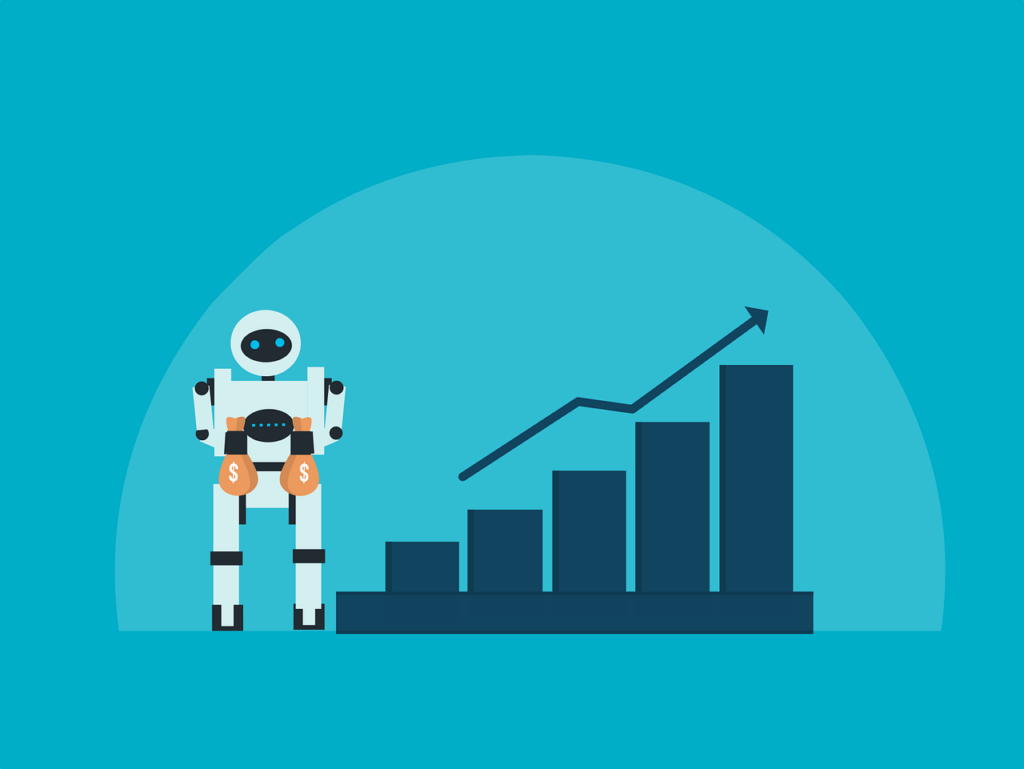Revolutionizing eCommerce: AI and Automation Take the Lead
Welcome to a thrilling exploration into the heart of eCommerce innovation. This week on The Checkout Point, powered by Blikket.co, we delve deep into how Artificial Intelligence (AI) and Automation are rapidly transforming the eCommerce sphere. Imagine a world where every digital interaction is optimized, every marketing strategy is autonomously adjusted, and every customer experience is customized. We’re not just talking about futuristic musings; this is the reality unfolding right now in week 39’s latest developments in eCommerce.

The Era of Intelligent eCommerce
The dynamic duo of AI and automation is not just a trend but a powerful reality, making waves across business operations. We’ve transitioned from manual drudgery to smart, swift, and streamlined processes that enhance productivity and fairness. Whether it’s through AI chatbots that provide round-the-clock customer service or sophisticated tools that tweak your marketing campaigns for optimal performance, the impact is profound and pervasive.
Your Holiday Shopping, Supercharged
Moreover, as we edge closer to the holiday season, the ripples caused by AI and automation are even more evident. Big players like Walmart and Amazon are gearing up with advanced tech arsenals to tackle the monumental holiday shopping waves. From strategic early deals kicking off in October to leveraging AI for forecasting and managing the Halloween spending spree, the holiday season is getting a major tech facelift, paving the way for a revolution in consumer behavior and marketplace dynamics.
The Checkout Technology Evolution
And that’s not all. Stay tuned as we also examine the latest shifts in payment and checkout technologies. From Amazon’s collaboration with PayPal to innovative AI applications that streamline payment processes, shopping has never been this secure or seamless. These advancements are not just enhancing the way we shop but are also setting a new standard for how privacy and security are handled in digital transactions.
Join us as we uncover the transformative power of AI and automation in eCommerce on The Checkout Point. It’s not just about staying updated with the trends but getting a foresight into how these technologies are setting the course for the future of online shopping and beyond.
Revolutionizing E-Commerce with AI and Automation
Welcome to an insightful exploration into how Artificial Intelligence (AI) and automation are reshaping the e-commerce landscape. Far from being mere buzzwords, these technologies are pivotal elements driving revolutionary changes across business practices and customer interactions. As industry giants like Amazon, Google, and HubSpot lead this charge, they unveil new possibilities that level the playing field for businesses of all sizes.

AI Empowerment for Smaller E-Commerce Players
Take Amazon’s innovative Amelia, an AI-powered assistant designed to streamline the operations of third-party sellers. Small business owners can now manage their online presence more efficiently, handling inventory and customer queries with the help of AI. By automating time-consuming tasks, Amelia not only enhances operational efficiency but also provides critical business insights that help sellers make informed decisions. This democratization of tools, once exclusive to major players, fundamentally changes the competitive landscape giving smaller businesses a substantial advantage.
Personalization in Marketing with HubSpot’s AI Tools
On the marketing front, HubSpot is pioneering with new AI-driven tools that personalize customer interactions. Through AI, businesses can now tailor marketing messages according to user preferences and behavior. If you’ve ever visited a site and later received spot-on product recommendations or helpful content via email, you’ve experienced this AI in action. This approach not only improves customer satisfaction but also strengthens brand loyalty by fostering genuine connections through personalized engagement.
Smarter Advertising with Google’s AI Innovations
Google is transforming advertising with AI-powered image editing tools for ads across its network. These tools automatically adjust images to ensure optimal display on various platforms, enhancing the visual appeal without necessitating expert design skills. This capability enables businesses to create high-quality, engaging ads that are both responsive and visually striking, streamlining the ad creation process and saving valuable resources.
Streamlined Logistics with Amazon’s AI Solutions
Amazon is also making significant strides in logistics automation. Their fully managed AI-driven logistics platform allows sellers to automate their supply chain end-to-end. From inventory storage to product shipment, this system simplifies what has traditionally been a logistical headache for many smaller sellers, ensuring quicker deliveries and higher customer satisfaction. The platform, detailed here, acts like a personal logistics expert, optimizing the supply chain process to meet consumer demand swiftly and efficiently.
In conclusion, AI and automation in e-commerce are not about replacing human effort but amplifying it, turning operational challenges into opportunities for growth and innovation. As these technologies continue to evolve, they promise to enhance the e-commerce experience, making it more personal, efficient, and inclusive. For anyone invested in the future of online shopping—be it tech enthusiasts, business owners, or eCommerce managers—staying informed about AI and automation is crucial for navigating the future of commerce.
As we delve deeper into AI advancements, it’s evident that this is just the beginning. The integration of AI in e-commerce is setting the stage for a more efficient, equitable, and exciting marketplace, making now an exhilarating time to be involved in the e-commerce sector.
Exploring AI and Automation in E-commerce During the Holiday Sales Rush
The holiday season is synonymous with major sales and booming e-commerce activity. With companies like Walmart and Amazon at the forefront, the impressive figures and strategic sales events during this period reflect a remarkable utilization of AI and automation in eCommerce. Let’s explore how these giants deploy technology to capture and captivate the festive shopper’s attention.

Walmart Prepares for Action with AI and Automation
Starting October 8, the Walmart Holiday Deals Event becomes a focal point for shoppers. Behind the scenes, Walmart leverages advanced automation and predictive analytics to stock and distribute products efficiently. These technologies forecast demand trends, helping Walmart ensure that high-demand products are in stock. With AI-driven logistics, each customer’s order is processed, packed, and shipped with unprecedented speed and accuracy, showcasing the power of digital transformation in retail.
Amazon’s Big Deal Days: A Showcase of AI Excellence
Amazon’s 3rd Annual Prime Big Deal Days Sale is another testament to the utilization of AI in crafting personalized shopping experiences. Amazon uses machine learning algorithms to analyze shopping patterns and preferences, enabling them to offer tailor-made deals. For Prime members, this means receiving promotions that are aligned closely with their past purchases and search histories, enhancing the likelihood of purchases. Here, AI not only drives sales but also strengthens customer loyalty by delivering a customized shopping experience.
Economic Boost and Behavioral Insights from Halloween Spending
Meanwhile, the Halloween season, with an anticipated spending of $11.6 billion, provides insights into consumer behavior augmented by AI. E-commerce platforms deploy AI tools to analyze seasonal trends and Halloween-specific spending habits. This data informs stock levels and promotional strategies, ensuring stores meet the explosive demand for costumes, candies, and decorations effectively. It’s a prime example of how real-time data driven by AI can transform a traditional retail season into an optimized, high-scale operation.
The Bigger Picture: AI in Holiday eCommerce
The strategic application of AI and automation transforms the holiday shopping experience, making it smoother and more intuitive for millions of customers. From forecasting and inventory management to personalized marketing and customer service, AI is the quiet powerhouse that supports the glaring success of holiday sales. As e-commerce continues to evolve, the role of AI and automation will only grow, making each festive season more innovative than the last.
AI and automation are not just about the technology behind these mammoth sales; it’s about creating a seamless, enjoyable shopping journey for every customer. As we look towards more advanced integrations in the future, it’s clear that the marriage between AI and e-commerce is just beginning. Brace yourselves; the best is yet to come!
Revolutionizing eCommerce: AI and Automation Take Center Stage

The world of eCommerce is undergoing a seismic shift with the advent of new technologies that are transforming the way we conduct transactions, both simple and complex. Significant strides in payment and checkout technologies are not just influencing tech enthusiasts but have sweeping implications for everyday consumers and large corporations alike.
The Catalysts of Change: Amazon’s PayPal Integration and AI Innovations
Leading the charge in these advancements is Amazon’s groundbreaking partnership with PayPal. This collaboration paves the way for shoppers to utilize their PayPal funds on Amazon’s global platform, merging convenience with security in eCommerce transactions. The integration is more than a mere addition of a new payment method; it represents a strategic fusion of two powerhouses in the digital economy, setting a precedent for future technology partnerships in retail.
Amazon is also pushing the envelope with the rollout of new AI-driven tools geared towards sellers on its platform. These innovations are designed to predict purchasing patterns, recommend products accordingly, and automate routine tasks. This not only streamlines the operational aspects of selling but also significantly elevates the shopping experience by making desirable products more accessible and visible to potential buyers.
Enhancing B2B Transactions
On the B2B front, developments at Amazon Business and Spryker are reshaping inter-business transactions by broadening the spectrum of payment solutions available. Traditional B2B payment processes often involved lengthy, labor-intensive procedures. The advent of more dynamic and flexible payment systems now allows for smoother, more efficient operations, thus hastening the pace at which businesses can operate and deliver benefits down to the consumer level.
Every instance wherein you tap your phone for a quick contactless payment at a café or make bulk orders for your office harnesses the power of these evolving technologies. They promise not only more seamless and secure transactions but also enable businesses, from small local stores to large enterprises, to offer more personalized and customer-centric service.
Looking Ahead: The Future of Financial Exchange in Commerce
These advancements in payment methodologies and AI integration are fundamental to the underlying dynamics of our economy and, inherently, our day-to-day lives. The trajectory of these technologies foretells a future where transactional processes are anticipated to be even more streamlined and shopper-friendly. As these payment and checkout technologies continue to evolve, they remind us of the exciting directions in which our commercial interactions are headed.
Next time you choose the “Pay with PayPal” option on Amazon or opt for an innovative, quicker payment method, take a moment to appreciate that you are participating in a historical wave of technological evolution. This evolution persistently marries convenience with security, refining our daily transactions to something far beyond the ordinary—ushering in a new era of commerce that promises to be as exciting as it is transformative.
Revolutionizing Retail: AI and Automation in eCommerce
The retail landscape is undergoing seismic shifts, with eCommerce spearheading the revolution. Particularly intriguing are the latest developments in AI and automation, transforming how we market products and engage with customers online. Leading the charge, Google Ads recently introduced its Performance Max Insights and Controls, which promises to reshape future marketing strategies with its advanced capabilities.

The Meteoric Rise of eCommerce
As we witness eCommerce’s staggering growth, a trend further accelerated by recent global events, it’s clear that the digital marketplace is booming. Forecasts on global eCommerce revenues, such as the insights provided by Practical eCommerce, suggest this upsurge is far from a temporary spike. Small artisan shops and large retailers alike are increasingly embracing online sales platforms, signalling a permanent shift in the retail dynamic.
Consumer Behavior Transforms
But this growth in eCommerce isn’t just about impressive sales figures; it represents a fundamental transformation in consumer behavior. Each percentage increase in eCommerce revenue narrates the evolving story of shopping preferences, with millions opting for the click of a mouse over a walk to the store. This shift is underpinned by the demand for convenience, variety, and increasingly, personalized shopping experiences.
Google Ads: Enhancing Marketing Precision
Amidst these evolving consumer trends, Google Ads’ latest tool presents a potent opportunity for marketers. The new Performance Max Insights and Controls allow businesses to dissect precisely which marketing strategies resonate and which falter, providing invaluable real-time feedback. This allows for rapid, data-driven decisions—essential in the fast-paced world of eCommerce.
The Future of Traditional vs. Digital Retail
With eCommerce set to continue its dominance, one might ponder the future state of traditional retail stores. Will they retain their charm, or will we witness a new retail landscape entirely? As eCommerce evolves, it is imperative for physical stores to strike a balance that integrates technological advancements without losing the tangible shopping experiences many consumers still value.
A Call to the Next Generation
For aspiring marketers and the youth dipping their toes into retail, understanding and adapting to these shifts in shopping and selling methodologies will be crucial. eCommerce and retail marketing transcend simple transactions; they are about strategically responding to rapid changes in consumer needs and market dynamics. As we look to the future, staying informed and innovative will be key to crafting successful business strategies in the evolving retail world.
So, the next time you find yourself clicking “add to cart,” consider the vast network of AI and automation that played a part in leading that product to you. From understanding emerging trends to leveraging powerful tools like Google Ads, the landscape of eCommerce offers limitless opportunities for those ready to explore and exploit its potential.
AI and Automation in eCommerce: Pivotal Leadership Changes Reshape the Industry

In the rapid evolution of the eCommerce world, understanding AI and automation has proven essential for navigating its complexities and seizing opportunities. This article explores recent strategic leadership appointments across top industry players, revealing how they’re integrating AI into their operations to stay ahead.
Navigating Direct to Consumer (DTC) Challenges with AI: Nike’s Leadership Renewal
Nike, a behemoth in sports apparel, recently caught the industry’s eye by appointing a new CEO amidst significant DTC shifts. The move underscores a broader trend where big brands are increasingly leveraging AI and automation to refine their direct-to-consumer strategies. This transition is aimed at enhancing customer engagements directly, bypassing traditional retail channels. The role AI plays here is in personalized marketing, predictive analytics for stock management, and customer behavior analysis, essential for thriving in eCommerce.
Digital Transformation in Education: Scholastic’s New Chief Digital Officer
Another sector experiencing profound change is educational publishing, where Scholastic appointed its first Chief Digital Officer. This move signals a commitment to integrating AI technologies to revolutionize learning content delivery. Through AI-driven platforms, Scholastic aims to create more interactive and engaging educational experiences, aligning with the digital-first approach of modern students. This strategy not only caters to current needs but is a forward-thinking approach to capturing future markets.
Innovating Bridal eCommerce with AI: David’s Bridal Expansion
Meanwhile, in the bridal industry, David’s Bridal’s initiative to appoint a new chief business officer for its Pearl by David’s shows a pivot towards innovative eCommerce strategies. Learning from broader retail trends, they’re likely harnessing AI for better customization options, enhanced customer service, and an overall smoother digital customer journey. The strategic expansion reflects an understanding that AI and automation are not just trends, but necessities in today’s competitive landscapes.
These leadership changes across various sectors underline a universal shift towards deeper AI integration in eCommerce strategies. Companies are not just reacting to changes but are actively shaping their futures with advanced technologies. This proactive adaptation is setting benchmarks in the industry, emphasizing the importance of AI and automation in shaping market dynamics and consumer interactions.
Conclusion: The Role of AI in Shaping eCommerce’s Future
The strategic placements of these leaders highlight a clear message: the future of eCommerce rests heavily on AI and automation. These technologies are pivotal in translating consumer data into meaningful interactions and operational efficiencies. As these companies take bold steps toward digital transformation, they not only aim to enhance their operational capabilities but also set a precedent in the industry for innovation and consumer-centric approaches.
For eCommerce marketers and managers, these developments offer crucial insights into how AI and automation will define the next era of eCommerce, urging professionals to adapt and innovate continuously to stay relevant and competitive.
The unfolding leadership strategies in these iconic companies provide more than just lessons on business. They are guiding lights on the potent role of AI in revolutionizing industries by making smarter decisions and creating more enriching customer experiences.
Conclusion: Your Turn to Innovate in the eCommerce Arena
As we close another insightful week in the dynamic world of eCommerce, it’s crucial to reflect on the transformative roles AI and automation continue to play. From streamlining operations to personalizing customer experiences, the integration of these technologies isn’t just a trend—it’s becoming a cornerstone of successful eCommerce strategies.
This week at The Checkout Point, we’ve peeled back the layers on some of the industry’s most groundbreaking tools and strategies. As AI and automation evolve, so too does the landscape of online shopping. But what does this mean for your business? Are you prepared to ride the wave of change, or will you be left treading water?
As holiday seasons approach, how will your eCommerce platform leverage AI to handle surges in traffic and sales? Could the new payment innovations we discussed be the key to enhancing your customer’s checkout experience? There’s a lot to consider, and the time to act is now.
Engage with Us
We’re eager to hear how you are using AI and automation to revolutionize your eCommerce operations. Have you implemented any of the strategies discussed in today’s podcast? What successes or challenges have you encountered?
Join the discussion below by sharing your experiences, insights, or even your pressing questions. Your feedback not only helps us tailor our content to your needs but also fosters a community of innovators poised to redefine the eCommerce landscape.
Remember, exploring these questions isn’t just about keeping up—it’s about leading the way in your industry. Don’t miss out on next week’s episode where we continue to dive deep into the trends shaping your world.
Stay innovative, stay informed, and let’s propel your eCommerce business to new heights. See you in the comments and in next week’s episode!










